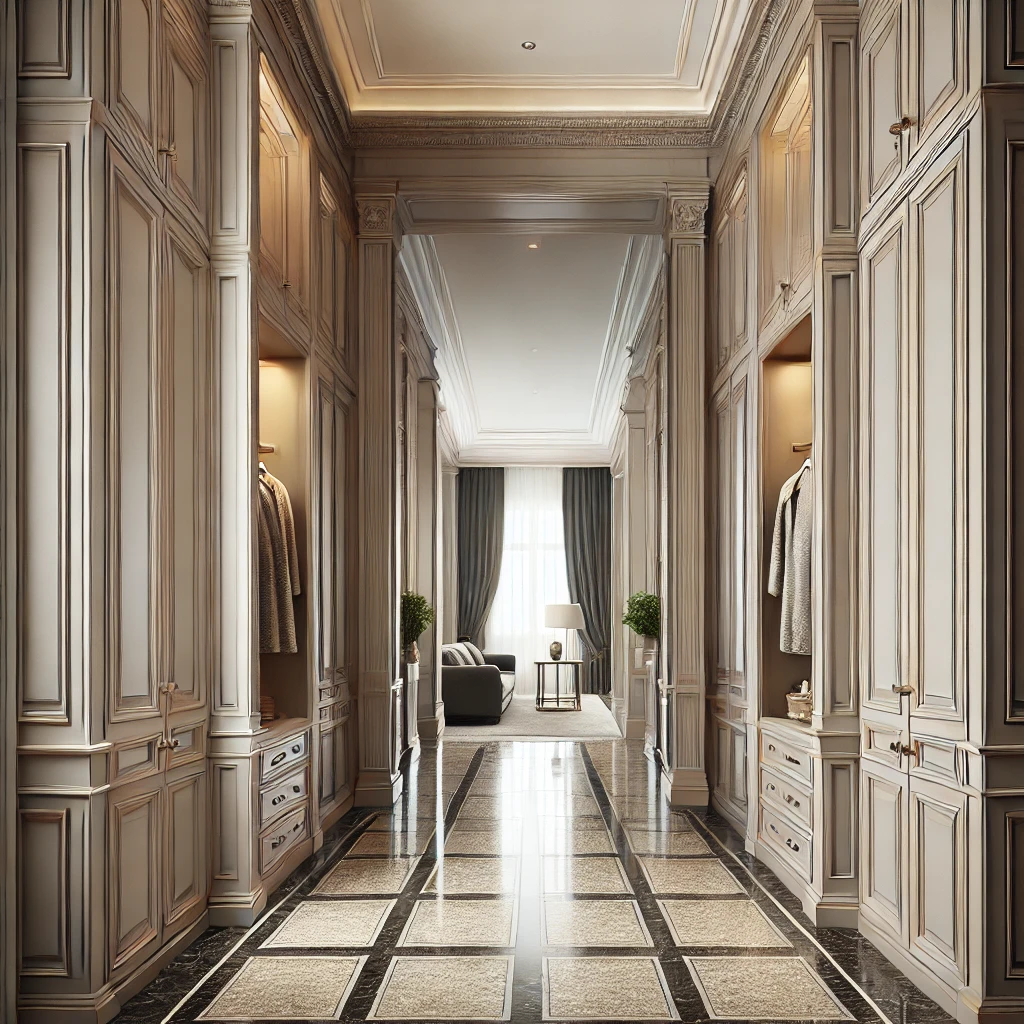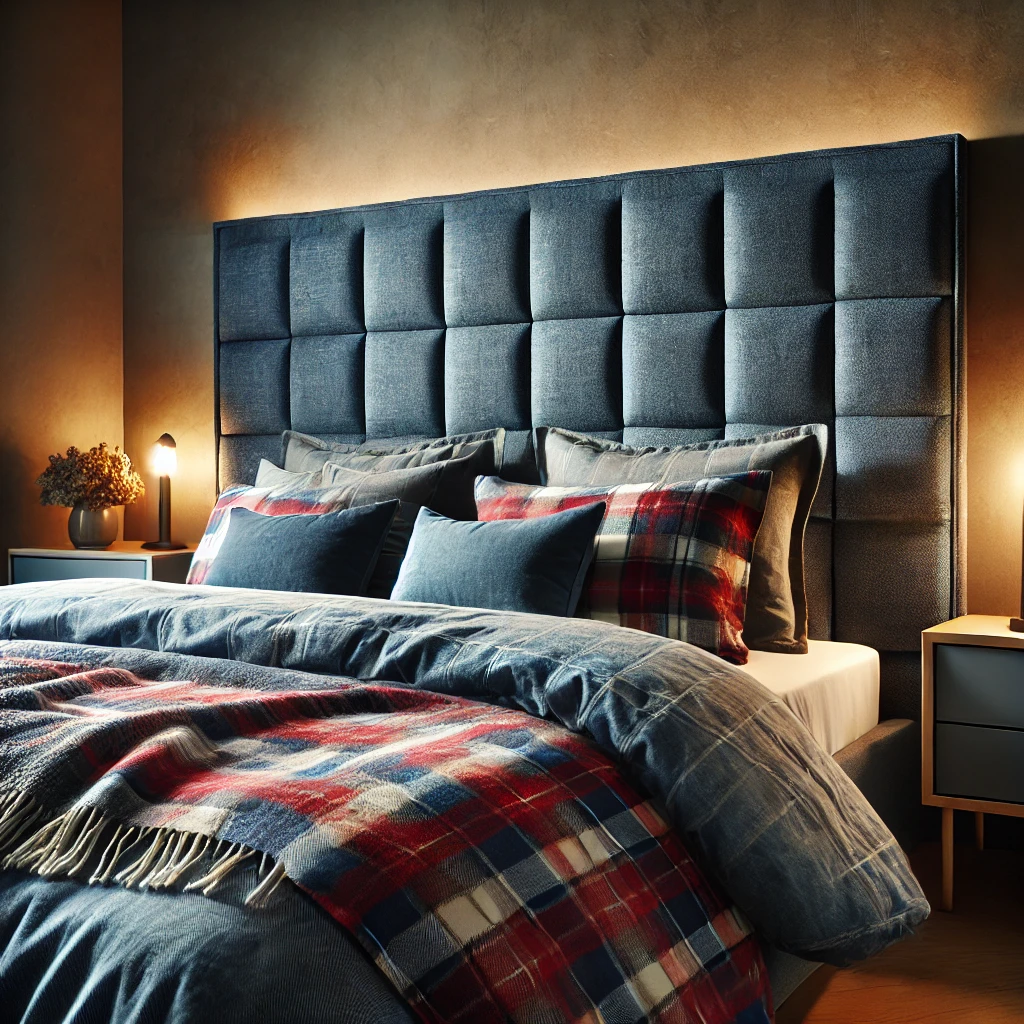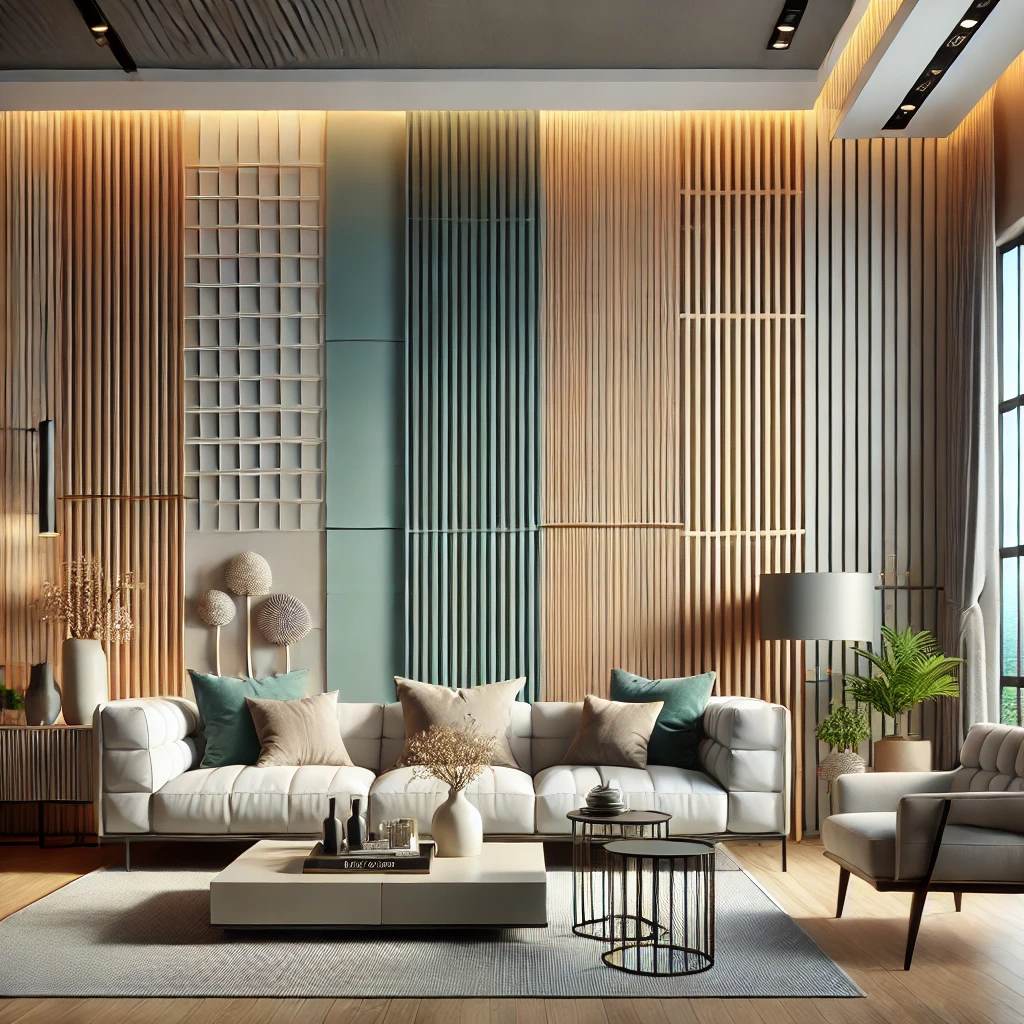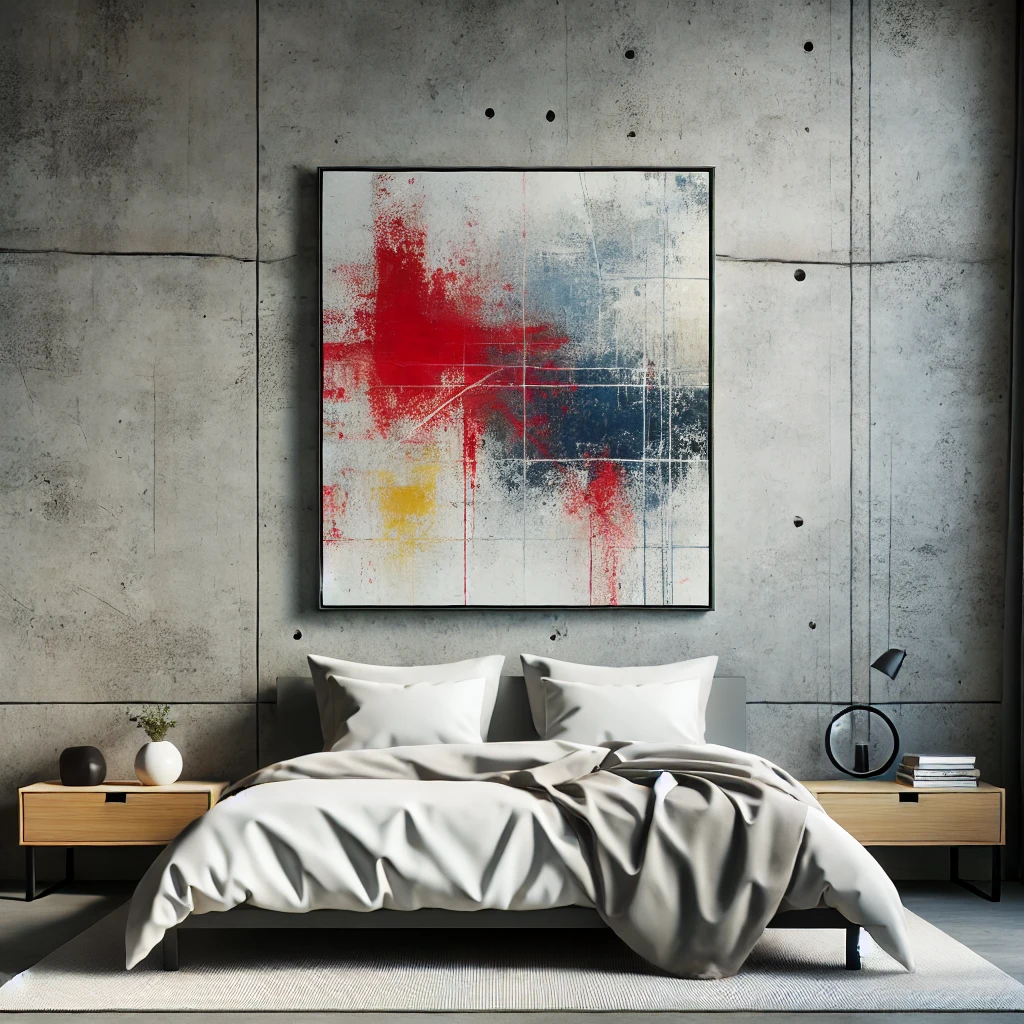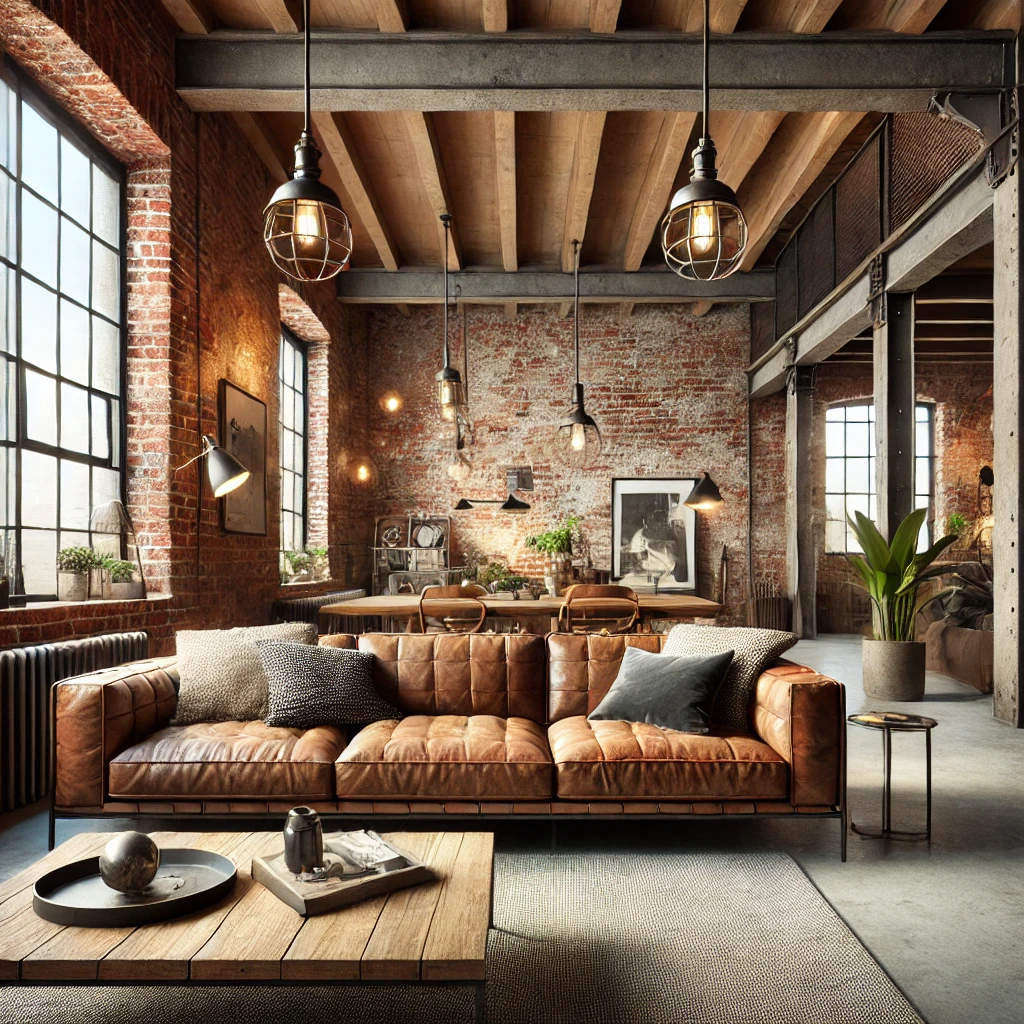Mastering Tile Layouts: How to Combine Light and Dark Tiles in Your Bathroom

When planning the layout of bathroom tiles, many people start and end their design journey with the catalogs offered by tile manufacturers. While these catalogs are filled with stylish ideas, they often overlook budget-friendly solutions that can make a big impact. In this post, we’ll explore how to creatively combine light and dark tiles on your bathroom walls, allowing you to achieve a stunning design without breaking the bank.
1. Addressing High Ceilings
In bathrooms with high ceilings, creating horizontal accents can visually lower the height and make the space feel more harmonious. This is especially important in small bathrooms where the height can create a “well effect.” Consider using a few thin dark lines on a light background, or opt for a broader dark band along the lower portion of the walls to achieve balance.
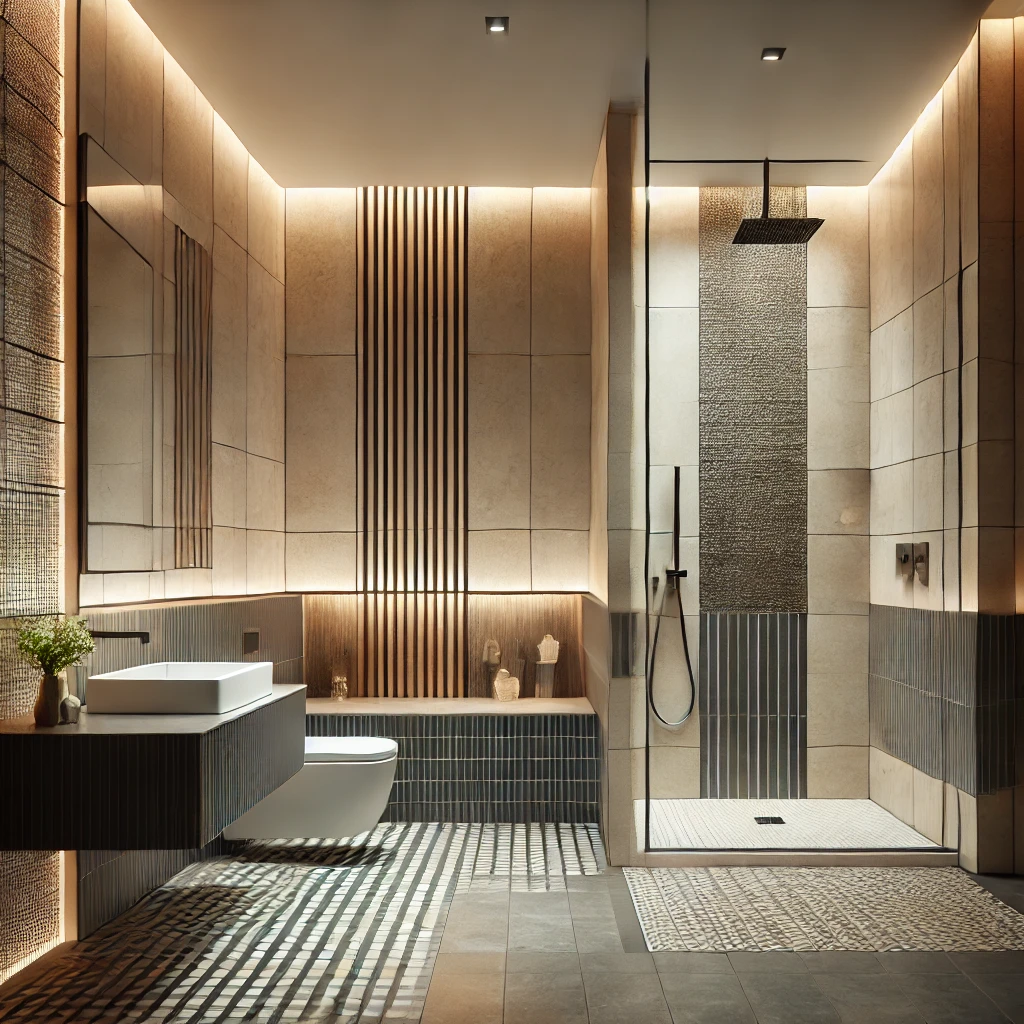
2. Widening Narrow Spaces
If your bathroom feels too narrow, a layout that features a light top and a darker bottom can help broaden the space visually. This approach can also add a decorative element to your walls. To ensure cohesion, align the dark band with the height of your furniture, mirrors, and other fixtures.
3. Making the Room Taller
Vertical accents are ideal for making a room appear taller and more unified. By emphasizing one or two vertical planes, you can guide the eye upward, enhancing the room’s height and creating a more balanced aesthetic.
4. Adjusting Proportions in Narrow Bathrooms
In long, narrow bathrooms, darker walls can seem closer, while lighter ones recede. By strategically placing darker tiles on certain walls, you can “square off” the space, making it feel more balanced. This technique is particularly effective when highlighting key areas like the shower.
5. Enhancing Corners
For bathrooms with awkward corners, using different tile colors on perpendicular walls can help define separate zones. This method works well in both small and large spaces, allowing you to create distinct areas for the shower, toilet, or sink while maintaining a cohesive look.
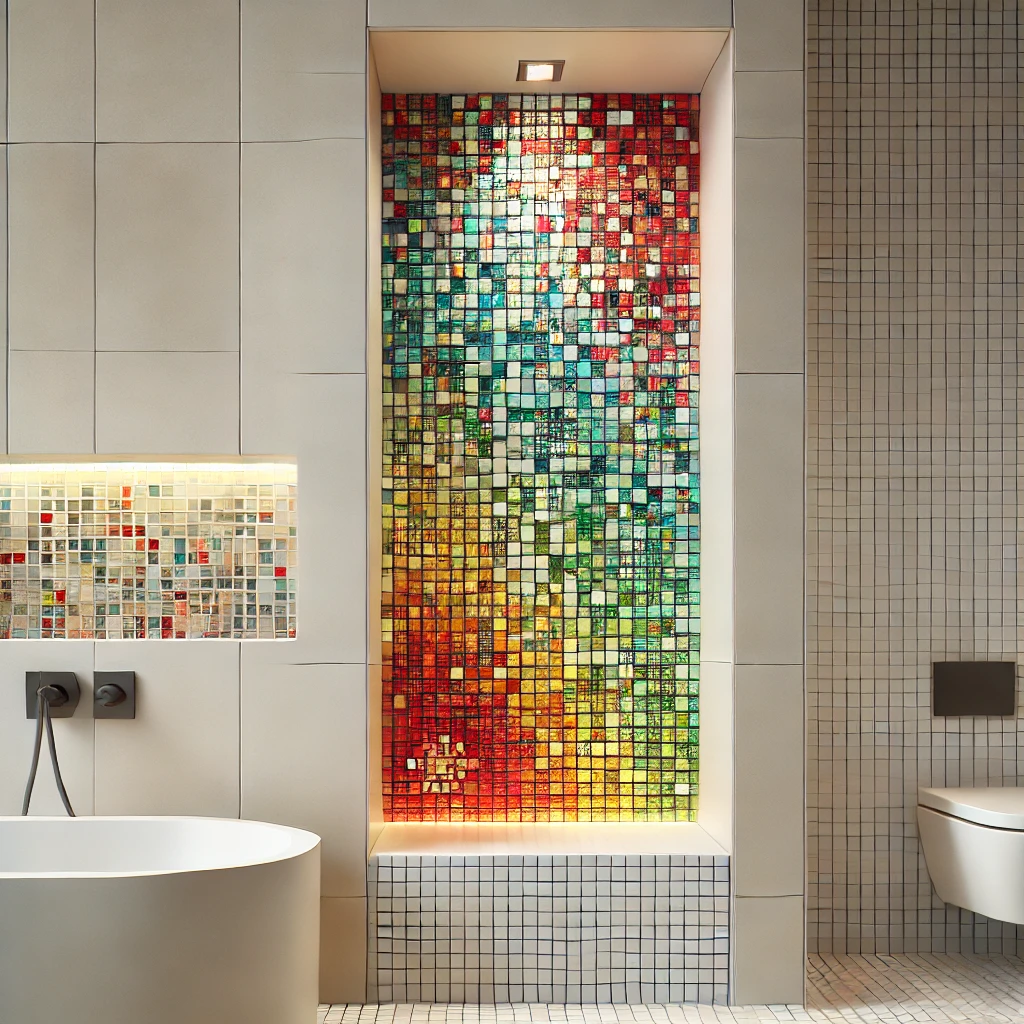
6. Introducing Mosaic Highlights
Mosaic tiles can add a vibrant touch to your bathroom without overwhelming the space. Instead of covering an entire wall, use mosaics to create a focal point, such as a backsplash or a niche. This approach adds interest while keeping costs in check.
7. Creating a Feature Wall
If you’re looking for a dramatic touch, consider using tiles with a bold pattern or creating a patchwork of different designs. This technique works best on a single wall, allowing the pattern to take center stage without competing with other elements.
8. Adding Pops of Color
For those who love color, try scattering brightly colored tiles across one or two walls. This seemingly random arrangement can inject personality into the space, while a contrasting border or frame around a mirror can tie the look together.
9. Combining Tiles with Paint or Plaster
In modern bathrooms, combining tiles with painted walls or decorative plaster is becoming increasingly popular. This method allows for a mix of textures and finishes, creating a sophisticated, layered look. When using this approach, make sure to tile up to at least 115 cm from the floor to protect against moisture.
10. Tiling Only the Wet Zones
There’s no need to tile every inch of your bathroom. Focus on the areas most prone to moisture, such as around the sink, bathtub, or shower. The rest of the walls can be painted with a water-resistant paint, providing a versatile and budget-friendly solution.
Get a free consultation with ZUBRA COLORS! We offer expert advice on decorative paint and plaster solutions for DIY projects. Contact us on WhatsApp for worldwide shipping and a free consultation today!
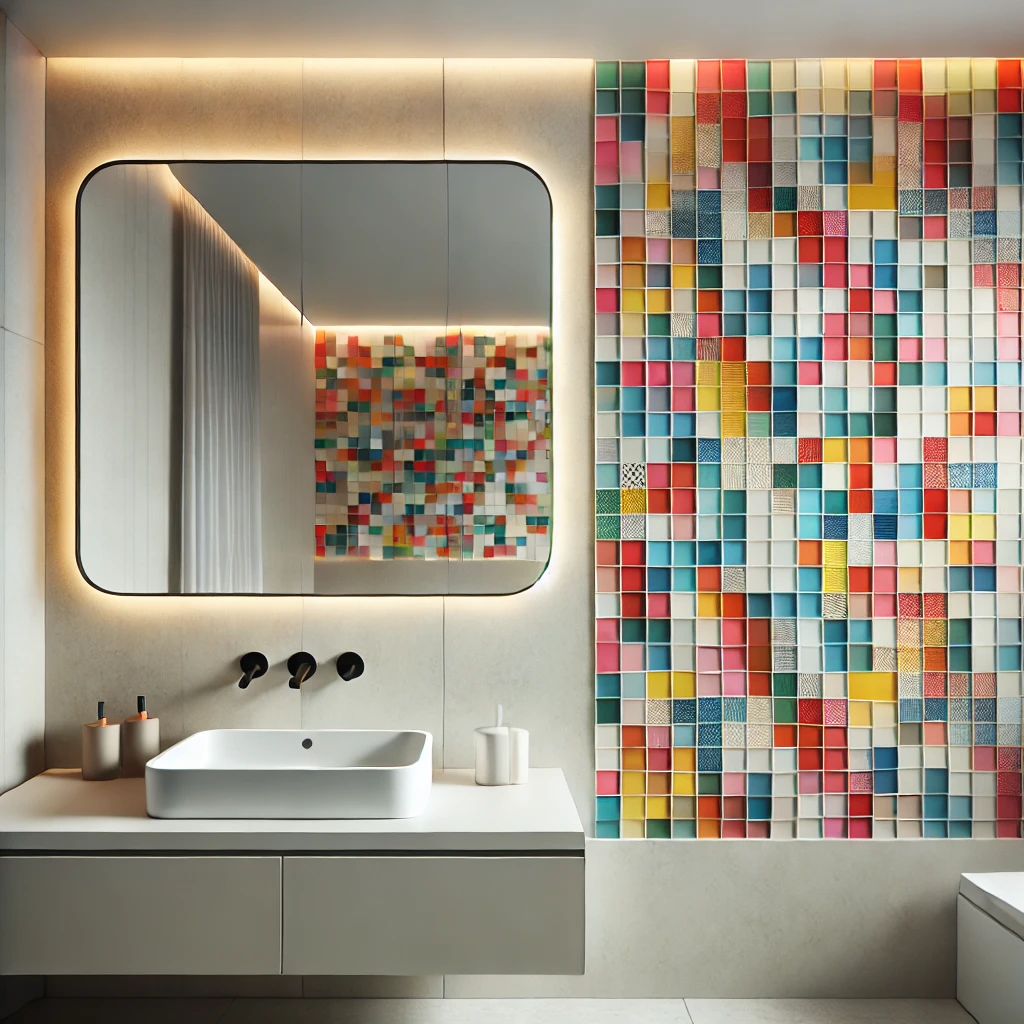
11. Balancing with Neutral Tones
Neutral tones, such as soft grays, beiges, and whites, can create a serene and timeless bathroom environment. When using a combination of light and dark tiles, consider incorporating neutral tones to balance the overall look. Neutral tiles can be used as a backdrop, allowing the more vibrant or darker tiles to stand out without overwhelming the space. This approach works particularly well in contemporary bathrooms where simplicity and elegance are key.
12. Playing with Tile Orientation
Another creative way to enhance your bathroom’s aesthetic is by varying the orientation of your tiles. While horizontal and vertical placements are the most common, diagonal tile layouts can add a dynamic and unexpected twist to your design. For instance, diagonal tiles on the floor can make the room appear larger, while a diagonal layout on the walls can draw the eye upward, enhancing the room’s height.
13. Mixing Textures and Finishes
Combining different textures and finishes can add depth and interest to your bathroom. Consider pairing glossy tiles with matte finishes, or smooth tiles with more textured ones. This contrast can create a sophisticated look, especially when done in a monochromatic color scheme. Textured tiles can also be used to create an accent wall, adding a tactile element that invites touch and creates visual intrigue.
14. Creating Visual Pathways
Strategically using color and tile placement to create visual pathways can guide the eye through the space and make the room feel more cohesive. For example, a line of dark tiles leading from the entrance to the shower can subtly direct attention to the key features of the bathroom. This technique can also be used to elongate the room or to highlight specific areas, such as a bathtub or vanity.
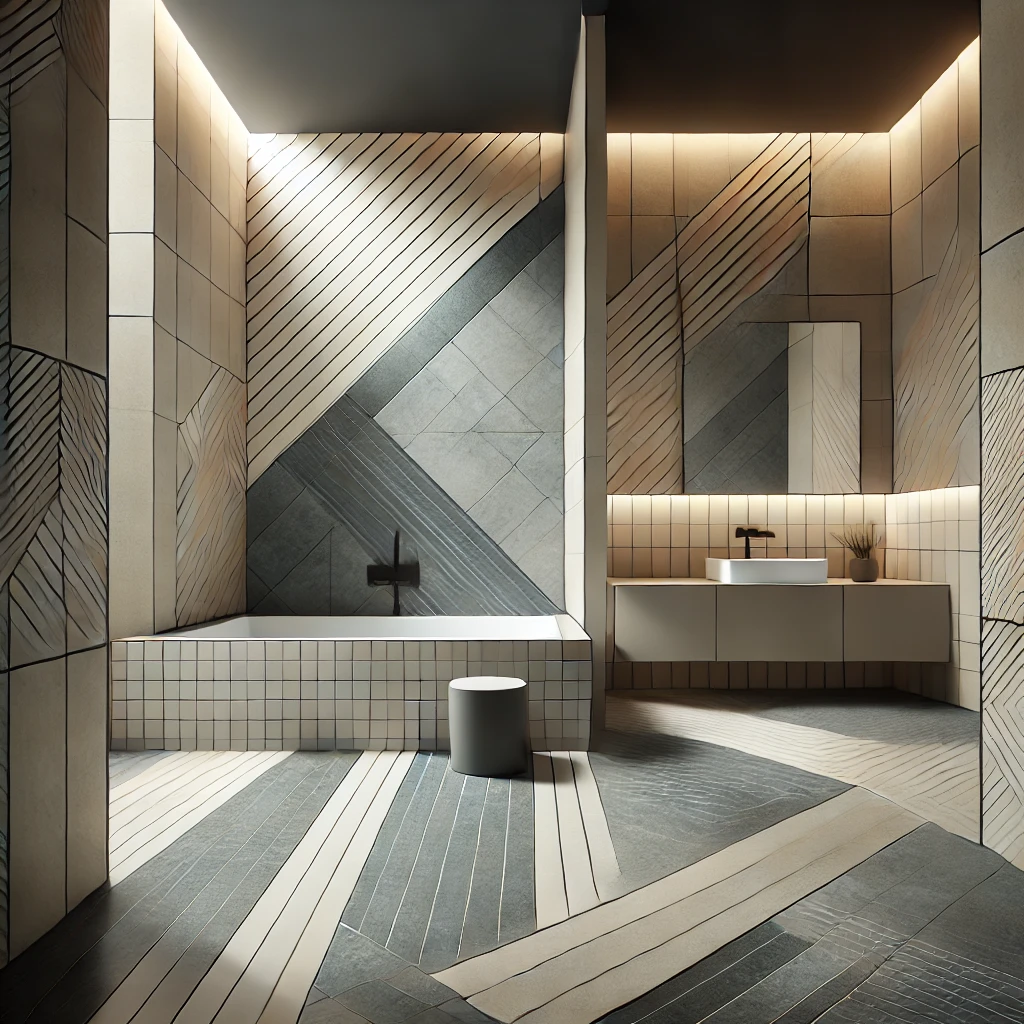
15. Incorporating Natural Elements
Bringing natural elements into your bathroom design can create a calming and spa-like atmosphere. Stone-look tiles, wood-effect ceramics, and natural stone mosaics are excellent choices for adding a touch of nature. These materials can be used on floors, walls, or even as a backsplash to bring warmth and texture into the space. Pair these natural elements with greenery, such as potted plants or a vertical garden, to enhance the organic feel.
16. Highlighting Architectural Features
Bathrooms often have unique architectural features, such as alcoves, niches, or sloped ceilings. Instead of hiding these elements, use tile to highlight them. For example, a contrasting tile in a recessed niche can make it a focal point, perfect for displaying toiletries or decorative items. Similarly, a different tile pattern on a sloped ceiling can add character and emphasize the room’s unique layout.
17. Combining Large and Small Tiles
Mixing large format tiles with smaller ones can create a striking visual effect. Large tiles can make a room feel more expansive and less cluttered, while smaller tiles can add detail and interest. For example, you might use large tiles on the main walls and floor, and then incorporate smaller mosaic tiles in the shower area or as a border around the room. This approach adds variety and texture without overwhelming the space.
18. Utilizing Grout as a Design Element
Grout is often overlooked in bathroom design, but it can be used to make a bold statement. Dark grout with light tiles can create a grid-like pattern that adds a modern, industrial edge to your bathroom. Conversely, matching grout to your tile color can create a seamless look that lets the tile shine. For a more playful touch, consider using colored grout, such as blue or green, to add a pop of color and personality.
19. Zoning with Color
Color zoning is an effective way to define different areas within a bathroom. For example, you can use one color of tile for the shower area and another for the vanity space. This not only adds visual interest but also helps to organize the space functionally. Color zoning is particularly useful in larger bathrooms where defining areas can create a more structured and intentional design.
20. Framing with Tile Borders
Tile borders can be used to frame certain areas of your bathroom, such as mirrors, windows, or even entire walls. A border can add a finishing touch that makes the overall design look more polished and cohesive. You can use a contrasting color or pattern for the border to make it stand out, or choose a subtle shade that blends seamlessly with the surrounding tiles.
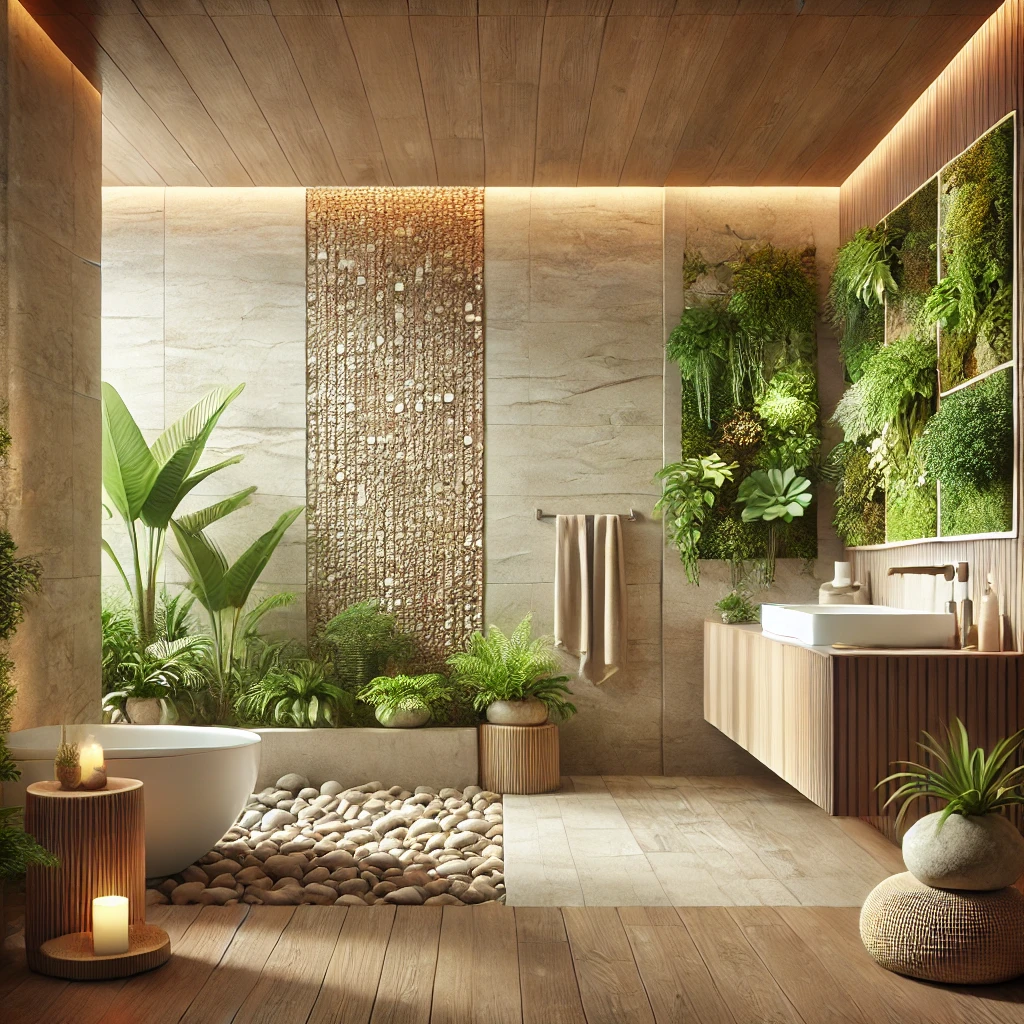
21. Adding a Touch of Luxury
For those looking to add a touch of luxury to their bathroom, consider incorporating tiles made from high-end materials, such as marble, glass, or metallic finishes. These tiles can be used sparingly, such as in a feature wall or as a backsplash, to create a sense of opulence without overpowering the space. Pairing these luxurious materials with simpler, more subdued tiles can create a balanced and sophisticated look.
22. Customizing with Tile Patterns
Don’t be afraid to get creative with tile patterns. From classic herringbone to bold geometric designs, customizing your tile layout can give your bathroom a unique personality. You can even create your own pattern by mixing and matching different tiles. Whether you go for a traditional or contemporary look, a custom tile pattern is sure to make your bathroom stand out.
23. Experimenting with Color Gradients
Creating a gradient effect with tiles is a modern and eye-catching way to add color to your bathroom. Start with a darker shade at the bottom of the wall and gradually transition to a lighter shade as you move up. This ombre effect can add depth and dimension to your space, making it feel larger and more dynamic. It’s a perfect solution for those who love color but want to avoid a uniform look.
24. Enhancing Small Spaces with Mirrored Tiles
In smaller bathrooms, mirrored tiles can be used to reflect light and create the illusion of more space. Whether used as a backsplash or as an accent on one wall, mirrored tiles can make your bathroom feel brighter and more open. Just be sure to keep them clean and free of streaks to maintain their reflective quality.
25. Creating a Spa-Like Retreat
If relaxation is your goal, consider designing your bathroom with a spa-like atmosphere. Soft, neutral tiles combined with natural materials like stone and wood can create a serene environment. Incorporate elements like a rainfall showerhead, a freestanding bathtub, and ambient lighting to complete the spa experience. The right tile choice can transform your bathroom into a personal sanctuary where you can unwind and rejuvenate.
26. Achieving a Timeless Look
For those who prefer a timeless and classic aesthetic, sticking to neutral colors and simple patterns is key. Subway tiles, hexagonal tiles, and classic marble are excellent choices that never go out of style. By choosing timeless designs, you ensure that your bathroom will look elegant and fresh for years to come, regardless of changing trends.
27. The Power of Simplicity
Sometimes, less is more. A minimalist approach to tiling can result in a clean, uncluttered space that feels both modern and tranquil. Choose a single type of tile in a neutral color and let the simplicity speak for itself. This approach works particularly well in small bathrooms, where too much variation can make the space feel cramped. Minimalist designs are also easier to maintain and keep looking pristine.
Ready to transform your bathroom? Contact ZUBRA COLORS for expert advice on the best decorative paint and plaster solutions. We offer free consultations and worldwide shipping. Reach out to us on WhatsApp and start planning your dream bathroom today!



